The world's first railway troops were from Russia. For the holiday ZhDV
The beginning of the glorious path. Military workers and conduction companies
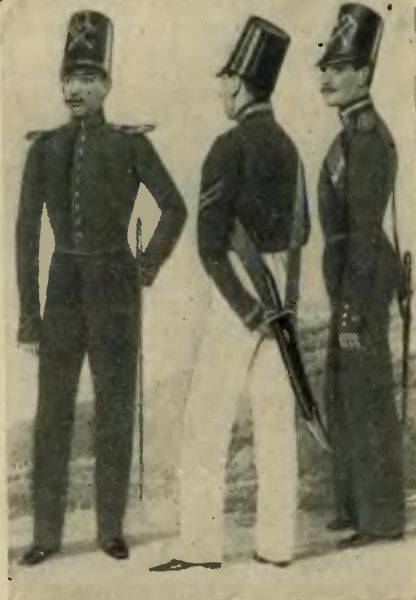 History Russian railway troops is in direct relationship with the development of railways in the country. In 1837, the first Tsarskoye Selo railway line in Russia was opened, although developments in the field of railway construction were undertaken before it. So, in 1833-1834. father and son EA and M.E. Cherepanovs constructed the first Russian steam locomotive. When the construction of the railway from St. Petersburg to Moscow was completed in 1851, it became necessary to create armed units to guard and ensure the smooth operation of the railway line. At the same time, the best representatives of the national military thought thought about using the rail service for transporting military units much earlier. So, back in 1841, N.S. Mordvinov predicted a great future for railways in terms of moving military units throughout the vast territory of the Russian Empire. During the period under review, the Main Directorate of Railways and Public Buildings was responsible for the transport communication in the Russian Empire. In addition to civilian institutions, military engineering units subordinated to him were consolidated into the Corps of Railway Engineers and the Construction Squad. Directly subordinate to the Main Directorate were 52 individual military-working companies that were engaged in providing security for land and waterways, but also bore responsibility for road repairs. In addition, there was a gardkoutny crew, who served for the protection of river routes - the Volga, Oka, Kama, Vyatka and Sura. Naturally, the appearance of the railway also required the creation of specialized military units for its maintenance. Initially, military-working companies were engaged in the service for the protection of the construction of the St. Petersburg-Moscow railroad, guarding a land road of a similar direction.
History Russian railway troops is in direct relationship with the development of railways in the country. In 1837, the first Tsarskoye Selo railway line in Russia was opened, although developments in the field of railway construction were undertaken before it. So, in 1833-1834. father and son EA and M.E. Cherepanovs constructed the first Russian steam locomotive. When the construction of the railway from St. Petersburg to Moscow was completed in 1851, it became necessary to create armed units to guard and ensure the smooth operation of the railway line. At the same time, the best representatives of the national military thought thought about using the rail service for transporting military units much earlier. So, back in 1841, N.S. Mordvinov predicted a great future for railways in terms of moving military units throughout the vast territory of the Russian Empire. During the period under review, the Main Directorate of Railways and Public Buildings was responsible for the transport communication in the Russian Empire. In addition to civilian institutions, military engineering units subordinated to him were consolidated into the Corps of Railway Engineers and the Construction Squad. Directly subordinate to the Main Directorate were 52 individual military-working companies that were engaged in providing security for land and waterways, but also bore responsibility for road repairs. In addition, there was a gardkoutny crew, who served for the protection of river routes - the Volga, Oka, Kama, Vyatka and Sura. Naturally, the appearance of the railway also required the creation of specialized military units for its maintenance. Initially, military-working companies were engaged in the service for the protection of the construction of the St. Petersburg-Moscow railroad, guarding a land road of a similar direction. After the construction of the St. Petersburg-Moscow railway line was completed in 1851, the 14 separate military workers companies, 2 conductor companies and 1 telegraph company were formed by a special order of the General Directorate of Communications and public buildings. In the first conductor's company, machinists, assistant machinists and stokers served in the service, and in the second company, the ober conductor and conductor. The total number of personnel of the conductor company was 550 people. The telegraph company was responsible for ensuring the work of the telegraph throughout the railway line. The number of telegraph companies was 290 people. The military-working companies included military 3500 personnel responsible for providing security for bridges, crossings, and railway stations. The emblem of the divisions became the symbolism of the department of communications - the crossed ax and anchor. Thus, in 1851, the first and very numerous subdivisions were formed, which were the prototype of the future railway troops of Russia. However, railway construction in the Russian Empire was faced with numerous obstacles, primarily related to the insufficient financing of the industry. Since construction work was carried out by representatives of foreign companies, they cared less about the needs of Russia and, much more, were concerned about their own enrichment. Therefore, the country's leadership was forced to move to a strategy to meet the needs of the construction of railways by military units.
Further development. Military road teams
In 1858, the first military working brigade of a total of 3500 military personnel was formed. She was immediately involved in the construction of the railway "St. Petersburg - Warsaw." In addition to the brigade, temporary military-working brigades were formed from the non-commissioned officers and privates of the active service to solve the tasks of building specific railway services, and after the construction was completed they were disbanded. In particular, four military-working companies were formed in 1863 for the construction of the Odessa-Parkana railway. All companies were subordinated to the head officer who enjoyed the rights of the commander of a separate battalion. Under the detachment commander, there were two officers, a treasurer, an auditor, and an office clerk. In addition, each company included 550 privates, 12 non-commissioned officers, captenarmus, medical assistant, company sergeant-major and company commander - officer. As system railway construction was deployed, it became obvious that it did not make sense to form temporary companies and brigades - after all, the rank and file and non-commissioned officers of these units only had time to get to the heart of their service, as the units disbanded. Therefore, it was decided to proceed to the practice of creating railway military units of a permanent composition. In 1864, the formation of military workers brigades began. Unlike their predecessors, they were permanent and moved from one place to another, as the construction of new lines of railways. The strength of the military working brigade was determined to be seven companies for the 650 privates in each company. Sometimes units of ground forces, primarily infantry, were also involved in railway construction, but the military department gradually refused this practice, since participation in the construction of railways did not allow infantry units to fully engage in combat training, that is, to engage in its main service. The most popular was the work of railway military workers brigades in the construction of railways in remote areas of the Russian Empire - in the Far East, in Central Asia.
As the length of the railroad tracks grew, the military leadership seriously thought about organizing and streamlining the transportation of large military contingents by rail. In 1862, a corresponding provision was adopted regulating the process of transporting troops and military personnel by rail. In 1866, the Statute on Military Road Teams was adopted, which should have been created in the event of war under the active army. Military road teams submitted to the inspector of military communications, and that, in turn, - the chief of staff of the army. The military road team consisted of two departments - technical and working. In the technical department bore service competent engineers and technicians, road foremen and workers of various specialties. The personnel of the department were staffed by order of the Department of Railways and approved by the Ministry of War. The working department was staffed by military personnel of the engineering troops and infantry, who do not have special training and are capable of performing work that does not require high qualifications. The leadership of the department was appointed by the military ministry from among officers of the military engineering service. Around the same time, in which the elaboration of regulations on military road crews and on the transportation of troops, the military workers, conductor and telegraph companies that had lasted a decade were disbanded. The Ministry of War in all its severity raised the question of the need to create an effective system of training railway specialists capable of serving in the military road teams in the event of mobilization and the start of hostilities. Indeed, by the time in question, the Russian army did not have such a reserve due to the lack of an organized training system.
In 1869, a regulation was developed on military railway teams formed on railways in peacetime. It was assumed that in peacetime military railway teams would be formed from a number of capable lower ranks of infantry and engineering units. 75% of the personnel of military railway teams were to be recruited from the number of infantrymen, 25% of personnel - from the number of sappers. The number of military railway teams on the country's 23 railways was determined by 800 people. In the course of their service, soldiers and non-commissioned officers took up railway specialties, and after demobilization they took special records and in the event of war were to be mobilized and sent to serve in military road teams. Along the way, the military railway teams were engaged in the construction of railway lines, repair and track works. Also, three Cossack military railway teams were formed in the 100 of the Don Cossacks who served on the Gryaz-Borisoglebskaya, Rostov-Grushevskaya and Kursk-Kharkov-Azov railways. Cossack teams acted on a similar schedule with the usual military railway teams and the Cossacks who served in them, in the event of war also had to be sent to military road teams. The upper Cossacks, in the event of the start of hostilities, had to protect railway infrastructure facilities, repair them, and if necessary, on the contrary, blow them up so that they would not reach the enemy. The creation of military railway teams had a positive effect on the mobilization readiness of the Russian army in the provision of military communications. It was thanks to the activities of the military railway teams that, in a relatively short time, it was possible to prepare an impressive contingent of non-commissioned officers and privates who possess railway specialties. In 1876, the number of such people was 2200. Thus, a reliable reserve of military-road teams, which was very numerous for that time, was provided. At the same time, the military leadership decided to start the formation of permanent railway military units that would be capable of carrying out large volumes of construction and repair of the railway bed during combat operations.
Railway battalions in the Russian-Turkish war
One of the main reasons for the transition to a new form of organization of railway troops was the upcoming war of the Russian Empire with Turkey, at the beginning of which no one among the leaders of the military department had any doubts.
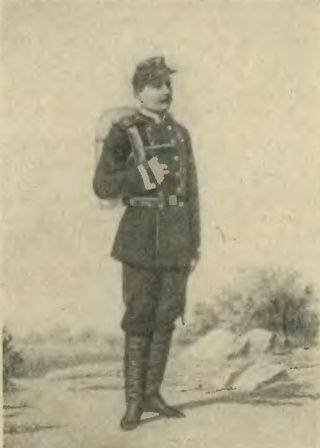 Therefore, the military ministry was tasked with creating effective units for the maintenance and construction of railways capable of operating on the Russian-Turkish front. The situation was aggravated by the underdevelopment of railways in areas where, as expected, Russian troops would operate. The lack of development of the railway infrastructure, in turn, significantly hampered the supply of troops and the organization of their supply. The task of organizing the provision of railway communications in a potentially front-line territory required the military leadership to streamline the service of military-railway teams. The main shortcoming of the military railway teams was personnel shortage: the teams experienced a tremendous shortage of personnel officers, and the training of personnel, although carried out at an acceptable level, but still did not differ in unity, since each head of the military road team trained subordinates in accordance with their own views on the specifics of the service. The need for universalization of training and the provision of personnel officers, trained by non-commissioned officers and soldiers, led to the formation of permanent military units in the form of railway battalions. According to the heads of the military department, it was the battalion form of the organization that most responded to the practical needs of railway construction and the service for the protection and repair of railway infrastructure. In accordance with the order of the Minister of War of November 12 1876, a military road battalion was formed, which soon became known as the 3 railway battalion and was included in the 3 brigade.
Therefore, the military ministry was tasked with creating effective units for the maintenance and construction of railways capable of operating on the Russian-Turkish front. The situation was aggravated by the underdevelopment of railways in areas where, as expected, Russian troops would operate. The lack of development of the railway infrastructure, in turn, significantly hampered the supply of troops and the organization of their supply. The task of organizing the provision of railway communications in a potentially front-line territory required the military leadership to streamline the service of military-railway teams. The main shortcoming of the military railway teams was personnel shortage: the teams experienced a tremendous shortage of personnel officers, and the training of personnel, although carried out at an acceptable level, but still did not differ in unity, since each head of the military road team trained subordinates in accordance with their own views on the specifics of the service. The need for universalization of training and the provision of personnel officers, trained by non-commissioned officers and soldiers, led to the formation of permanent military units in the form of railway battalions. According to the heads of the military department, it was the battalion form of the organization that most responded to the practical needs of railway construction and the service for the protection and repair of railway infrastructure. In accordance with the order of the Minister of War of November 12 1876, a military road battalion was formed, which soon became known as the 3 railway battalion and was included in the 3 brigade. The 3 railway battalion consisted of two construction and two operational companies. The first operational company was a company of rolling stock and traction services, the second - a company of traffic and telegraph service. The number of operational companies was determined in 337 non-commissioned officers and privates each, the number of construction companies in non-commissioners and privates each in 196. The personnel of the railway battalion was armed with Berdan, and the machinists, assistants and firemen, with revolvers. The battalion servicemen wore sappers uniforms, but with “F” letters on their shoulder straps. Acquisition of the railway battalion was carried out through the selection of non-commissioned officers and privates, trained in military railway teams and possessing relevant railway specialties. The officers also had special training. As for construction companies, they included 5 railway engineers, 4 equipment, road foremen, foremen, track workers and other specialists necessary for organizing construction and repair work on railway lines. The construction companies had their own 4 locomotive, 34 wagons for personnel, 2 auxiliary wagons and 4 platforms, as well as a large number of tools needed for repair, rehabilitation, construction or liquidation works on railway sections. As far as operational companies are concerned, they included 9 railway engineers, telegraph office officials, machinists and their assistants, firemen, train makers, conductor, assistant station managers and other specialists. Thus, the battalion served as 2 headquarters officer, 22 chief officer, 23 civilian official, 1066 noncommissioned officers and privates, and 31 civilian employee. Thus, in the Russian Empire, the first full-fledged military unit of railway troops was created, capable of performing various combat missions. In 1877, two more railway battalions were created.
Russian-Turkish war 1877-1878 became the first serious test for the Russian railway troops. The avant-garde of the Russian army included the 3 officer and the 129 lower ranks from the 3 railway battalion. It was assumed that the Russian troops would be sent through the territory of Romania, but the railways of this country were in very poor condition, practically unsuitable for transporting large military contingents. Therefore, the 3-th railway battalion was thrown at the restoration of the railway between Cucuteni and Iasi, which was blurred by the spilled lakes. Within two days the railway communication was restored, while the Romanian railway services requested two weeks for the implementation of this scope of work. Thus, the restoration of the Kukuteni-Iasi canvas was the first "battle" of the Russian railway troops, which they withstood with honor - including, thanks to the titanic efforts of the soldiers and noncommissioned officers, who were able to restore the railway track in flood conditions. Subsequently, during the war, the 3 railway battalion was repeatedly attracted to restore the railway tracks and even to build an additional gauge on the Ungheni-Iasi stretch. In addition, the railway battalion carried out repairs to the rolling stock involved in the transportation of military units through Romania. Non-commissioned officers and privates of the railway battalion were seconded to the Romanian trains, covering the shortage of qualified specialists in the Romanian railway department. Until May 1878, the Russian soldiers served in Romania, providing the rail service of this country.
During the war in Moscow, the 2 and 4 railway battalions were formed. The 2 Battalion was formed on June 30 1877, and immediately sent to the front - to Romania. The battalion companies were used to guard trains with cargoes traveling to Bucharest, Brailov and other cities in the country. Construction companies took part in the construction of the Iasi-Bucharest branch bypassing Pascani. To increase the capacity of the Romanian railways, it was decided to build a branch from Bender to Galati, which the battalion could carry out in just 100 days. Thanks to the built railway branch, the task of bringing the Russian army and its equipment was significantly facilitated. During the construction of the branch, 15 stations, 300 bridges and pipes were constructed. Between December 1877 and November 1878, more than 130 thousands of troops of the Russian army were transported along the road. In January 1878 was formed a consolidated company of soldiers and non-commissioned officers of railway battalions, directed to the southern direction of the railways, and at the end of April 1878, the full battalion 3 was sent to the South Turkish railways. At the end of the 1878, the 2 and 3 battalions were withdrawn to the territory of Russia. Until February 1879, the operation of the South-Turkish railways was in the hands of the 4 railway battalion, after which it was transferred to the responsible Turkish authorities. In June, the 1879 g. 4-th railway battalion was withdrawn into the territory of the Russian Empire. The Russian-Turkish war was the baptism of the fighting military units of the Russian army and showed the promise of their use in the conditions of the modern war, convincing the military leadership of the importance of the railway troops for the Russian army. The railway infrastructure facilities built by Russian soldiers were subsequently operated by the Romanian railway department.
Own EIV railway regiment
In 1878, the 1 railway battalion was formed, whose task was to provide services for the maintenance and protection of the St. Petersburg - Tsarskoye Selo railroad, as well as the exit service for the protection of railways during the passage of the tsar and members royal family. By virtue of the tasks performed, the 1 railway battalion possessed the rights of guards military units and was distinguished by a special order of duty, the best supply. At the same time, soldiers, non-commissioned officers and officers of the battalion were practically not involved in the tasks of railway construction and guarding of railways in other regions of Russia and during military campaigns. After the end of the Russian-Turkish war, the number of railway battalions was significantly reduced. In fact, they became the framed units, each consisting of a battalion commander, 4 company commanders, clerk, 6 non-commissioned officers, 2 company drummers and 83 soldiers. Headquarters officers and chief officers of the battalions were sent to continue service in the field and reserve infantry units, and the lower ranks were sent to the railways as ordinary workers. Thus, despite the successes of the railway troops in the Russian-Turkish war, in the post-war period, the policy of framing units actually led to a significant weakening of the real combat potential of the troops and reduced them to the pre-war level of military teams in terms of strength and strength. level of military discipline and cohesion of personnel. The Ministry of War actually shifted the task of training specialists of railway units to the department of communications, as the military officials were convinced that the railway troops should serve only for the operation of railways in wartime, and in peacetime the civil department would cope with these tasks ways of communication. In this regard, there was a steady need for reorganization and modernization of railway troops, including in the direction of improving the quality of training of personnel of the units. Moreover, the subordination of Central Asia dictated the need for the development of railway communication in the region. It was not possible to build and maintain a railway in Central Asia without military units - it was almost impossible to take a large number of civilian specialists who were ready to work in the “wild region”.
From the Caspian Sea to Samarkand
The need to build a railway in Central Asia was dictated by economic and military-political considerations. First, the region was very weakly connected with Russia, which made economic exchange and management difficult. Second, the British, whose headquarters and military units were stationed in India, could receive advantages in the region without a rail link. The construction of the Transcaspian region was entrusted to the Turkmen tribes inhabiting the Trans-Caspian region, and was entrusted to the Ministry of War to build the Trans-Caspian region. For the construction of the railway in 1880, the 1-th Reserve Railway Battalion was formed, which included 4 companies and 1069 non-commissioned officers and soldiers. However, in the process of recruiting a battalion, the command faced a total shortage of qualified personnel. Even for the recruitment of one battalion company, there was not an adequate number of non-commissioned officers and soldiers, which required the involvement of military personnel from infantry and engineering troops. The 14 of May 1880 was sent from Moscow by the 1 Company of the regiment, and the battalion was completed only by December 25 of 1880, after which the battalion was also sent to Central Asia - to start work on the construction of the Transcaspian railway. Engineers of the Ministry of Railways were seconded to the battalion, who were hastily certified as servicemen and enlisted in the battalion. In addition, excavators were attached to the battalion - civilians hired in the Central Russian provinces from among the unemployed peasant population. The construction of the Trans-Caspian railway was the next, after the Russian-Turkish war, the page of the glorious battle path of the railway troops of the Russian Empire.
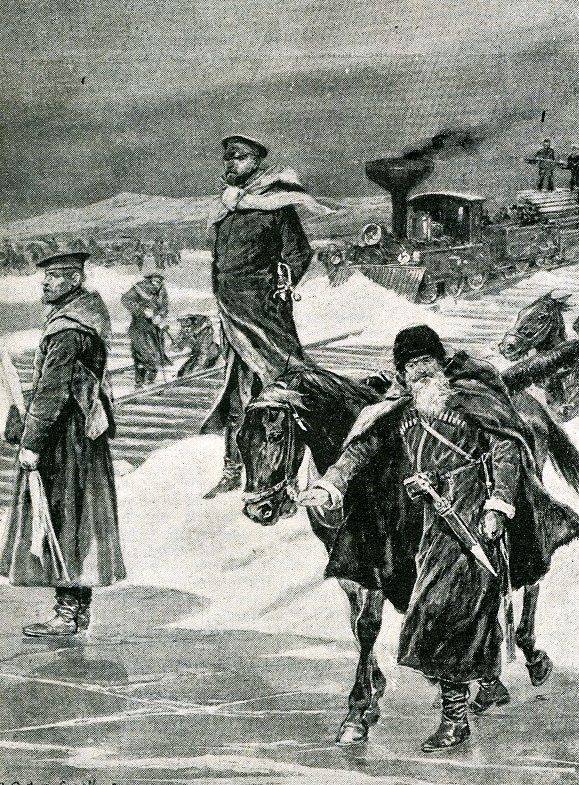
Within forty days of work, by October 5 1880 23 was built a broad gauge kilometer to Mall Kary and 37 narrow gauge kilometers - to Kyzyl Arvat. In the process of building the road, railway workers faced many difficulties, primarily with the lack of sources of clean water and climatic differences. By the method of "trial and error" the railway battalion mastered the specifics of operating the canvas in the desert. Naturally, Russia's success in railway construction in Central Asia led to a negative reaction from the British, who feared further strengthening the position of the Russian Empire in the region. London, acting through its lobby in St. Petersburg - the Russian "fifth column" - was able to get the tsarist government to suspend further construction, after which work was stopped, and the railway battalion focused on ensuring the functioning and protection of the constructed section of the route to Kyzyl-Arvat . However, when relations between Russia and Great Britain, due to a conflict of interests in Central Asia and Afghanistan, tended to the limit and there was a threat of a real war with England in Central Asia, the government of the Russian Empire decided to resume the interrupted construction of the railway. The tasks for the construction of the road were assigned to the 2-th Transcaspian railway battalion being formed. The battalion's functional was divided - the 1-th Transcaspian railway battalion was responsible for maintaining the already constructed sections of the track and accepting new sections into operation, and the 2-th Trans-Caspian railway battalion assumed the main tasks of building the railway bed in the difficult conditions of the Central Asian region. In December, 1886 was the construction of the railway to Amu-Darya, 806 km in length. was completed, after which the railway battalion moved to the construction of a bridge across the Amu-Darya. Difficult bridge work was carried out for four months. 15 May 1888. The railway from the Caspian Sea to Samarkand was launched. The most important role in its construction and launch, and later in ensuring smooth operation, was played by the Trans-Caspian railway battalions.
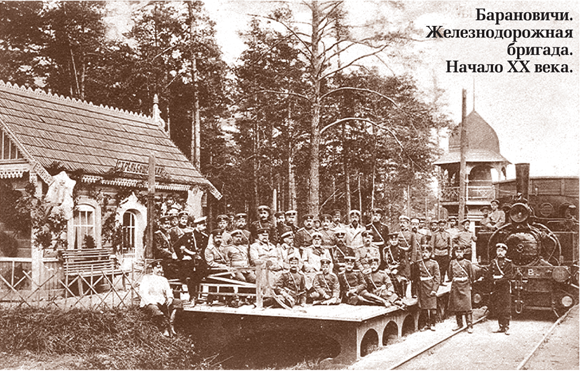
Transition to the railway brigade
Meanwhile, in the European part of the Russian Empire, a separate railway brigade was created in 1885, which included all three railway battalions. At the same time, the military leadership was puzzled by the optimization of the structure of the battalions for military and peacetime. According to wartime states, the railway battalion should have included two construction and two operational companies, 25 officers, 5 officials and 1112 lower ranks. In peacetime, the structure of the railway battalion was defined in two construction, two operational and one personnel company (in wartime, the second battalion was deployed at its base), but the number of personnel was reduced to 652 soldiers and 3 officials with the same number of officers in 25 people. Under the brigade and battalions, brigade and battalion schools were created, where training of specialists in various military railway specialties began - construction, rigging, movement, telegraph and subversive work. The officer corps was sometimes sent to the railways for advanced training. Training of the battalion personnel was carried out at a special training ground in Baranavichy. Along the way, with the training of personnel, the battalions of the railway brigade took part in the construction of railway branches and ensuring the transportation of military contingents by rail during military exercises. At the same time, the government, interested in saving money, used the labor of the soldiers of the railway battalions to extract profits, which also explained the frequent participation of the battalions in the process of building new railway lines. In 1890, a commission was created to study the situation in the railway troops, according to the members of which the training of troops was carried out at an insufficient level and required the allocation of a separate railway for soldiers and noncommissioned officers. But the government of the country was not able to provide financing for the construction of the railroad, so the idea of the commission was never implemented.
In the same 1890, new measures were taken to streamline the situation in the railway forces. In accordance with the Regulations on the field management of troops in wartime, in the event of war, the general leadership of the railway troops was to be exercised by the chief of military communications of the army, subordinate to the army chief of staff, and on special issues subordinate to the head of the railway department of the commander-in-chief. When the head of the army military communications functioned, the Field Road Administration was responsible for the construction and repair of roads. At the disposal of the Head of the Field Road Administration there were railway battalions, operational teams, units for the protection of railways. At the same time, the formation of new military units of railway troops. Thus, in 1895, the 1 Ussuri railway battalion was formed to carry out work on the construction of the South Ussuri Railway, and in 1903, the 2 Ussuriysky battalion. On the basis of two battalions, the Ussuriysk railway brigade was created, which performed important functions for the construction of the railway from Vladivostok to the r. Amur. In 1903, the 4 of the Zaamur battalion was formed, united into the Zaamur railway brigade of the border guard, whose duties included the protection and operation of the Chinese Eastern Railway (CER). In Central Asia, a Turkestan railway brigade was established on the basis of the Transcaspian battalions. The latter connection was distinguished by the fact that it included the Kushkinskaya field railway company, which served the field portable railway - a unique means of communication. Subsequently, similar companies were formed in Eastern Siberia - the Amur and Irkutsk field railway companies. By the beginning of the twentieth century. The formation of a system of military education for railway officers also applies.
Prior to this, the recruitment of officers was carried out through the transfer of officers from the engineering troops, but only 40% of railway officers had a technical education. Therefore, in December, 1903, under the Turkestan railway brigade, was founded a special officer school, to be completed by officers who do not have a special railway education and serve in the ranks of the railway troops. Each year, the school released 6 motion officers, 5 repair officers and 4 traction officer. The school organized the study of six subjects - the rules of railway traffic, steam mechanics and rolling stock, the construction of railways and artificial structures, construction art and architecture, mechanics and water supply, railway hygiene. The teaching staff of the school was staffed from among the officers of the Turkestan Railway Brigade with proper education and experience of service, and from among the staff of the engineering staff of the Transcaspian Railway Administration. Thus, the system of training not only soldiers and non-commissioned officers, but also railway officers with no specialized or technical education was significantly improved.
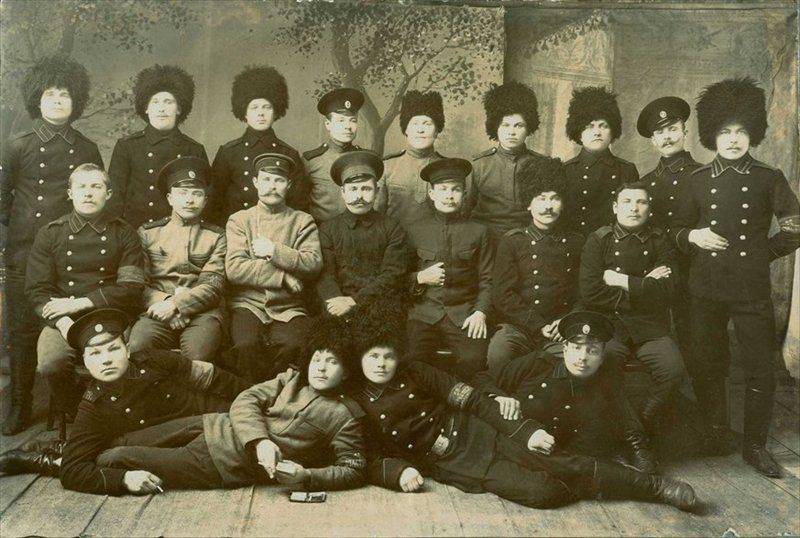
At the beginning of the twentieth century. The Russian Empire had very numerous and one of the best railway troops in the world. The Russian army consisted of 12 railway battalions, combined into 4 railway brigades. The Baranovichi railway brigade was responsible for the European part of Russia and the combat training of personnel for all brigades. The Turkestan Railway Brigade ensured the functioning and protection of the Trans-Caspian Railway, the Ussuriysky Brigade - the Ussuriysk Railway, and the Zaamurskaya Brigade - the Chinese Eastern Railway. One of the most combat-capable was the Zaamur railway brigade of the border guard, which, after the uprising of the boxers in China, was entrusted with the service of protecting the Chinese Eastern Railway. The brigade consisted of six 325 soldiers and non-commissioned officers. For the recruitment of each company, 125 people were separated from railway and sapper units, and 200 people - from infantry units deployed in the territory of the Amur Military District. The brigade units were stationed in Manchuria and played a key role in ensuring the operation of the CER during the Russo-Japanese War 1904-1905. Considering the underdevelopment of the railway communication on the Russian-Chinese border, the railway troops played a crucial role in ensuring the supply of the Russian army and its supplies during the Russian-Japanese war. The fighting forced the military leadership to think about the further improvement of the management of railway troops.
In particular, in October 1904, the Military Council decided to form a special category of railway troops, which included all the existing railway battalions. Secondly, the recruitment of officers of the railway troops was to be carried out by graduates of the engineering school and officers from other branches of the military, provided they had a higher or secondary technical education. From the jurisdiction of the Main Engineering Directorate, the railway troops were reassigned to the Army General Headquarters. A uniform staff of railway troops for peace and wartime was also established, and the need for training troops at a special range and a special military railway was emphasized. It can be said that it was precisely during the years of the Russian-Japanese war that ideas about the functionality of the railway troops during the fighting took place. It included: reconnaissance of the communication lines of enemy troops, the restoration and operation of railways freed from enemy troops, the construction of railways from main railways to the places of deployment of army units, the organization of the operation of railway lines in wartime, the protection of railways and preparation for the defense of bridges and other infrastructure, the possible destruction of the railway bed in case of retreat. Despite the fact that for Russia as a whole, the Russian-Japanese war brought only disappointments, it helped the railway troops to realize their own shortcomings and advantages. It was during the Russian-Japanese war that the final design of the railway troops took place, which was to take part in a much more global First World War.
- P P 'SЊSЏ RџRѕR "RѕRЅSЃRєRёR№
- http://warspot.ru/, http://old.kurier.lt, http://wiki.nashtransport.ru/, http://www.liveinternet.ru/
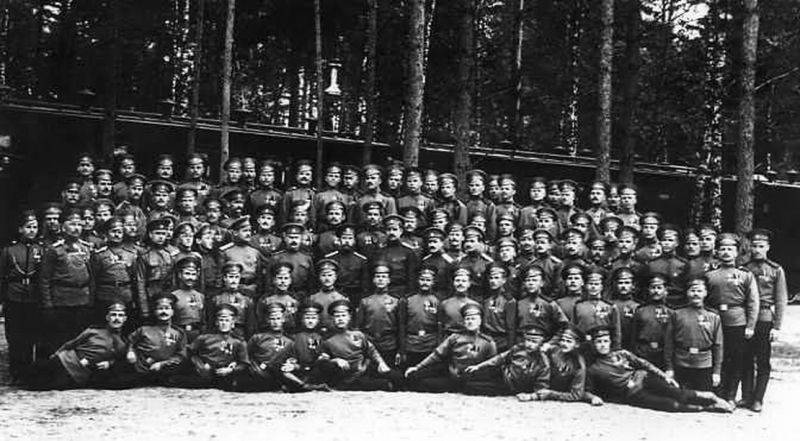
Information